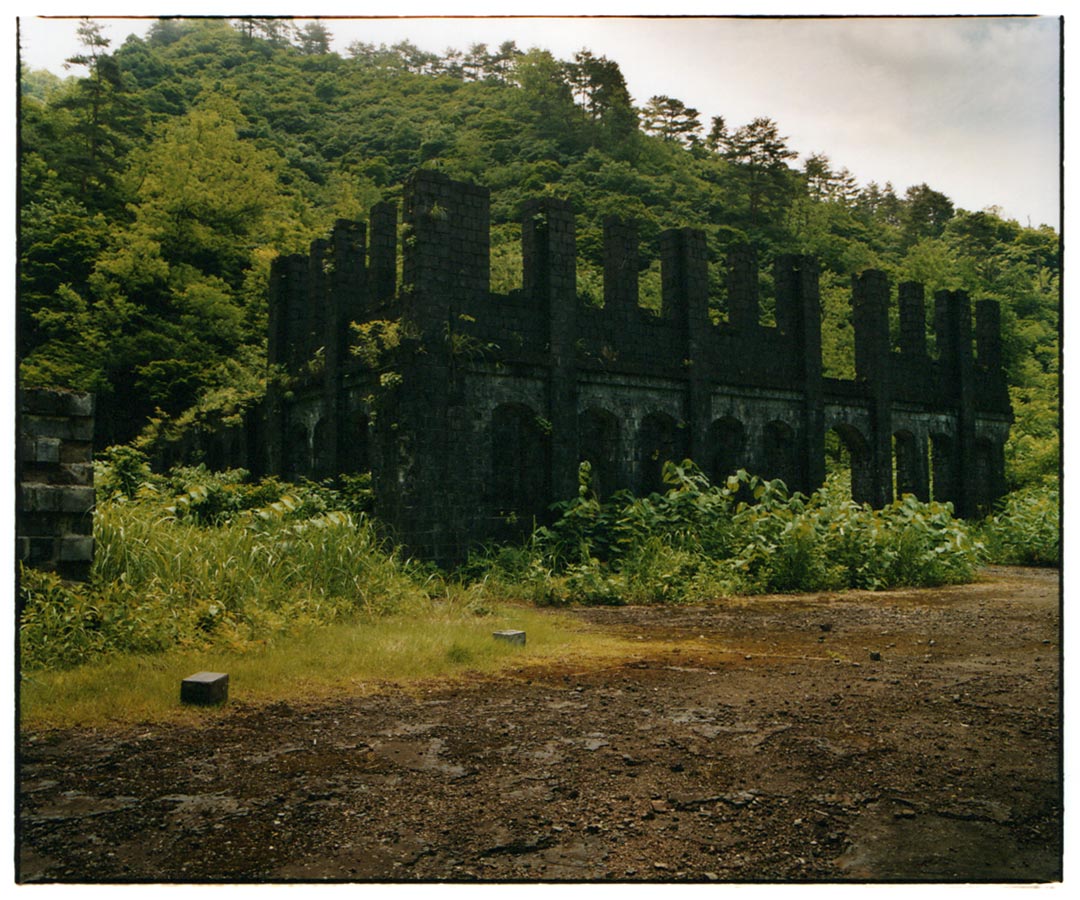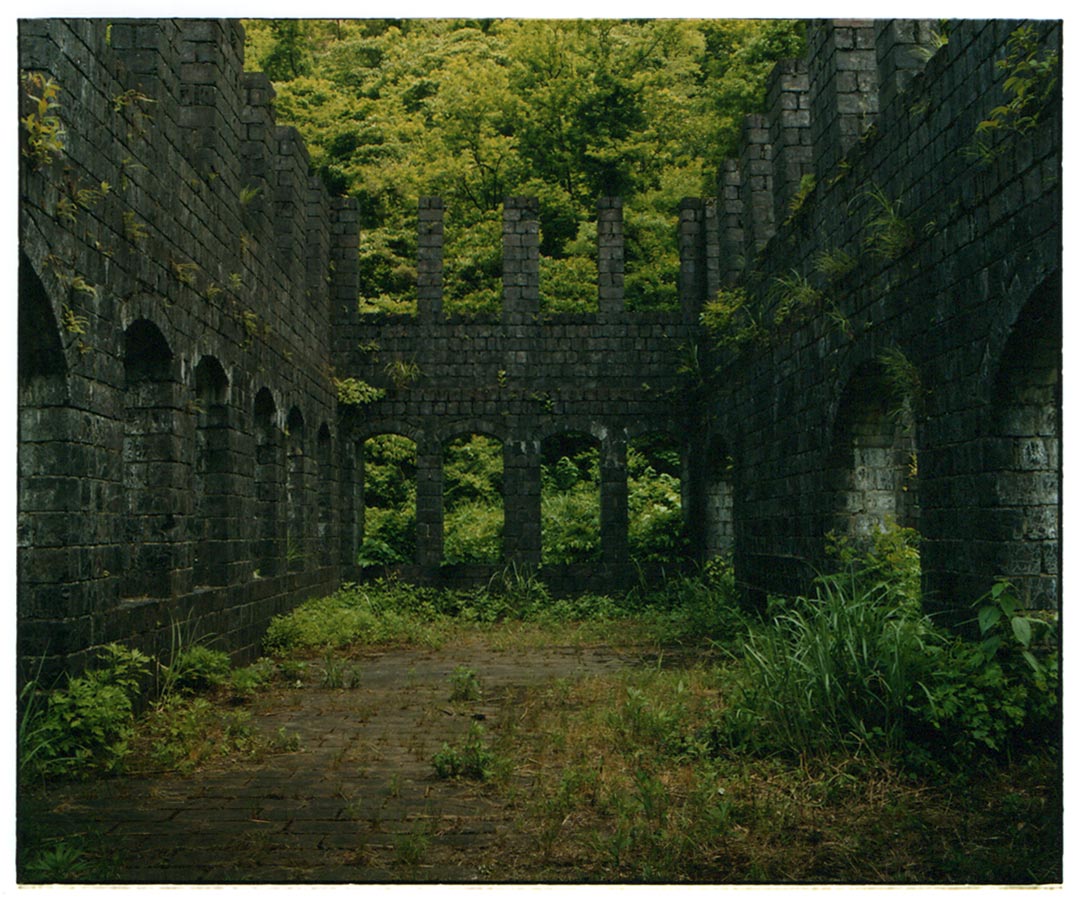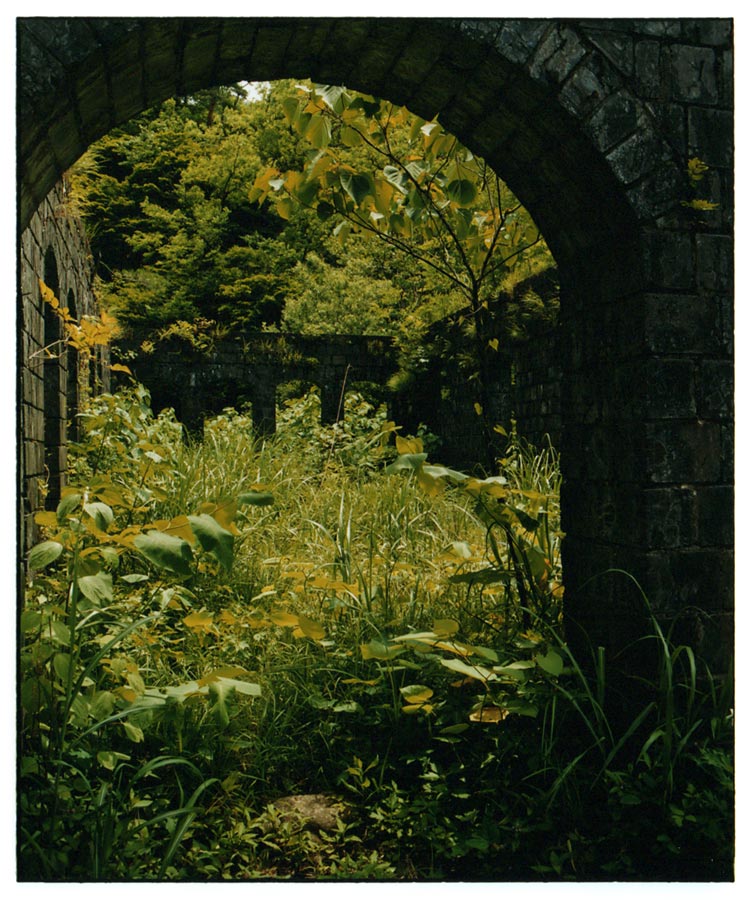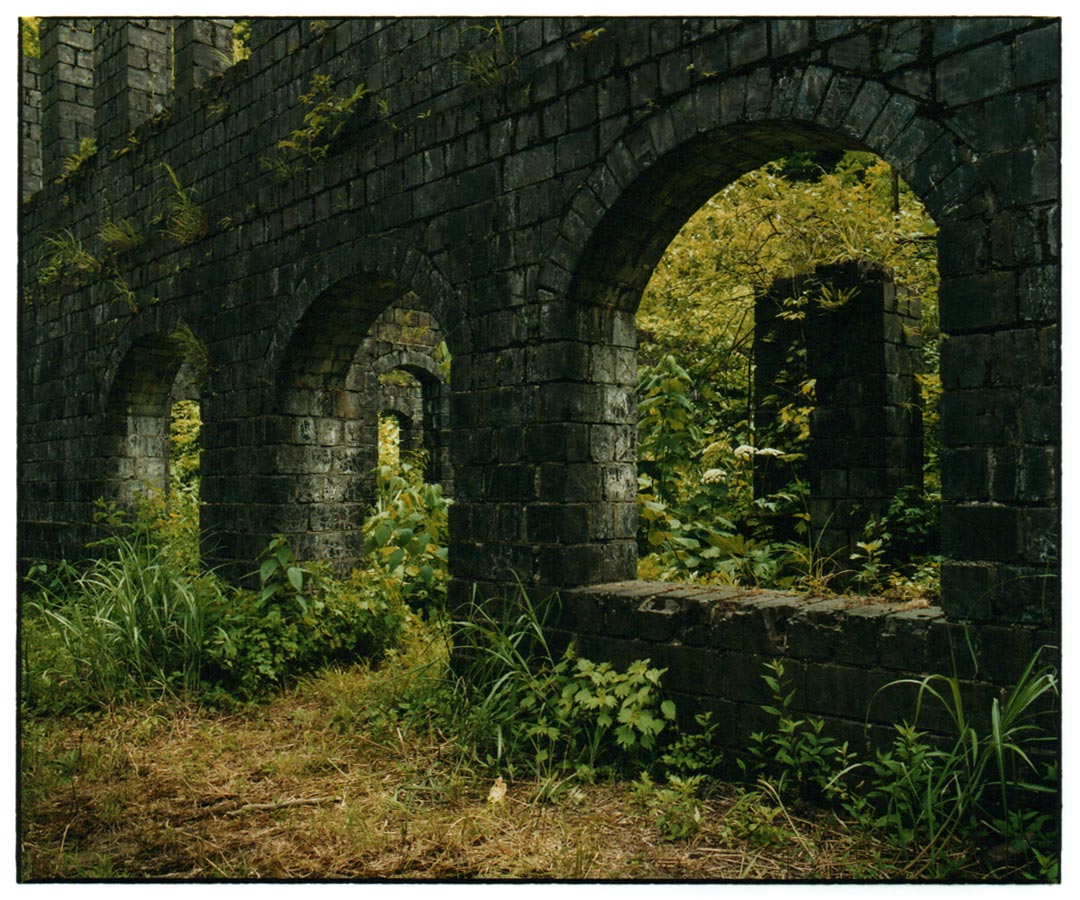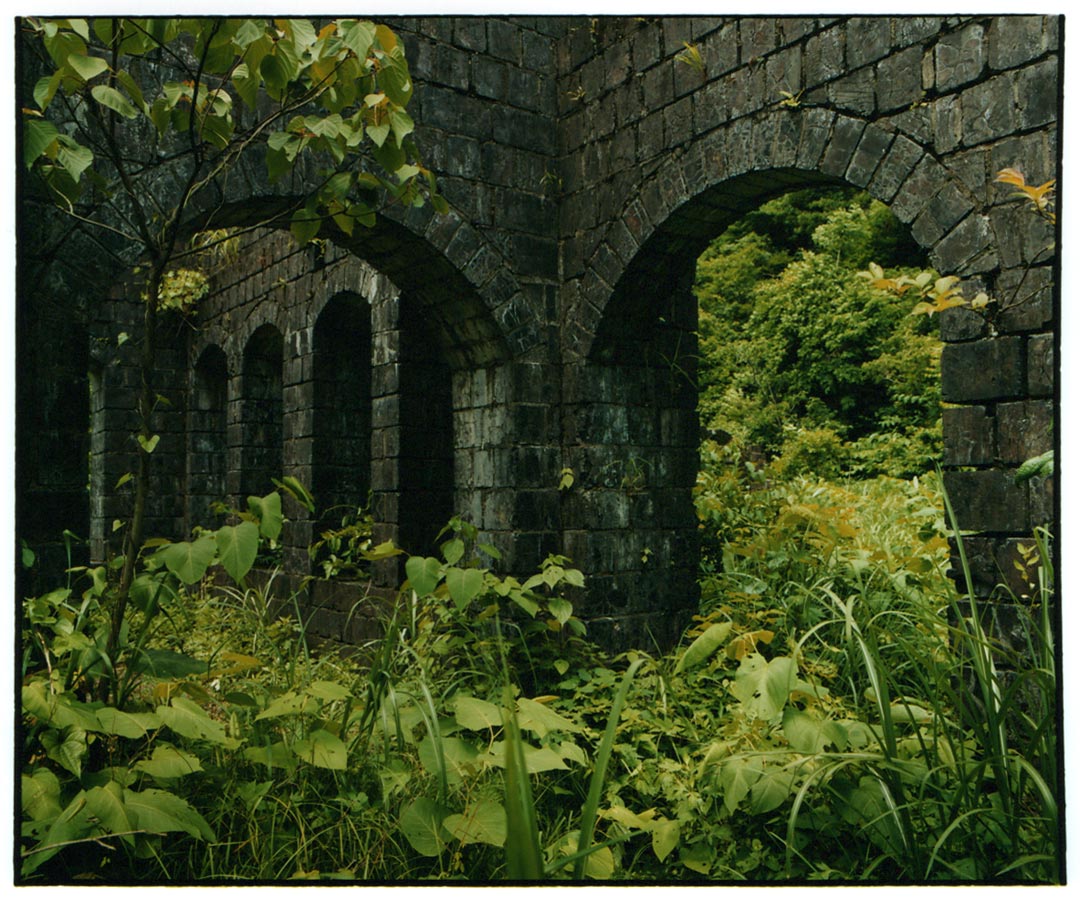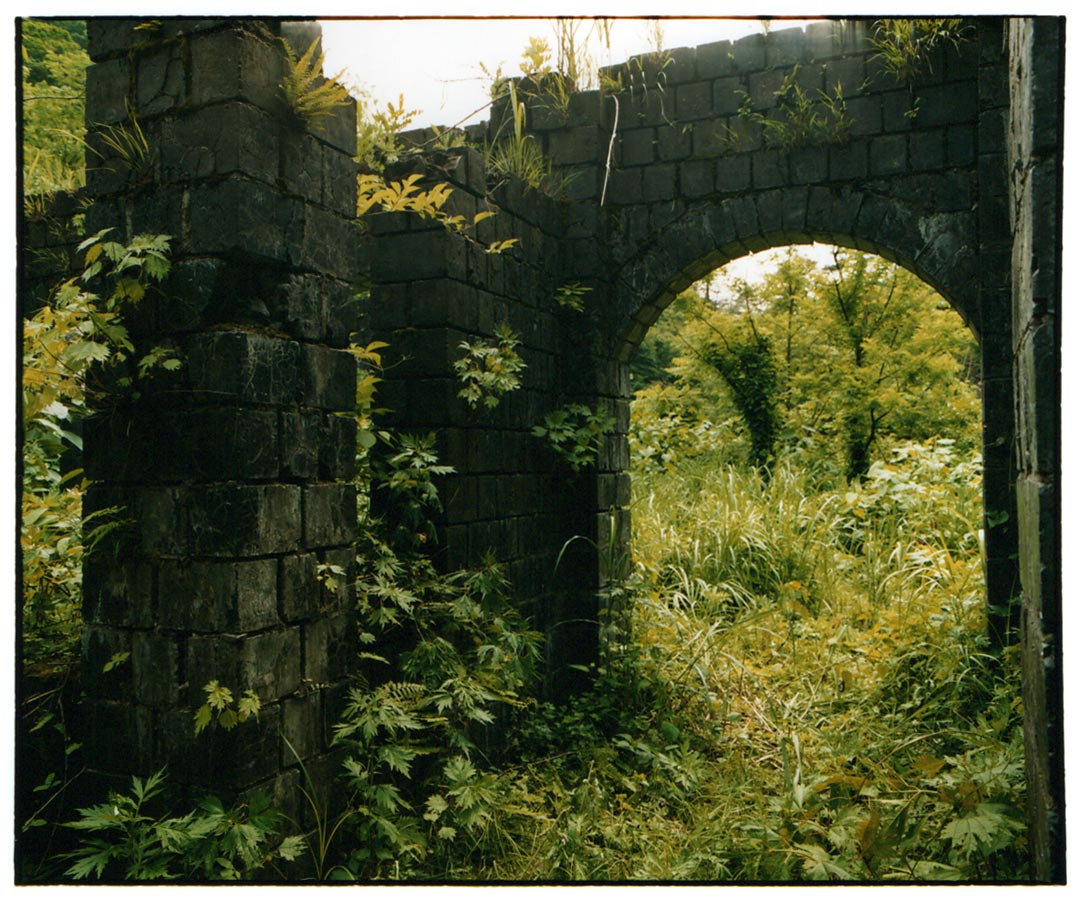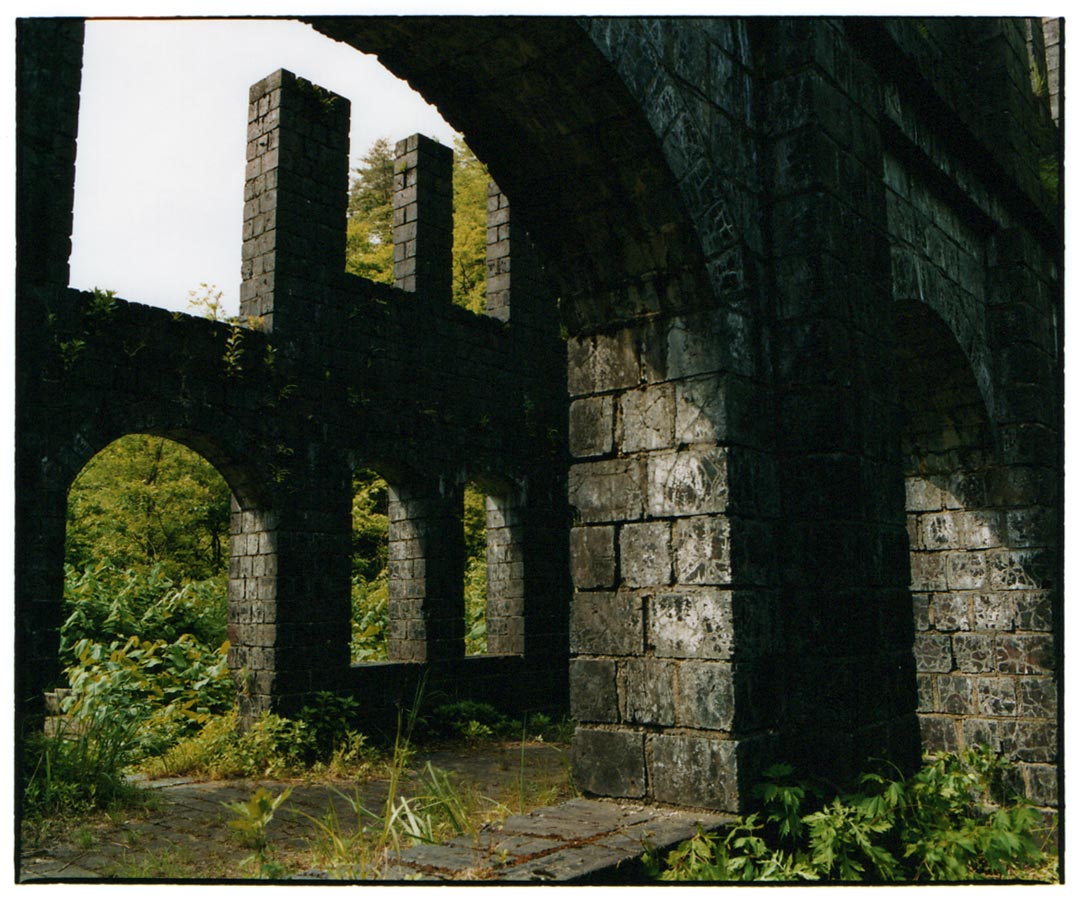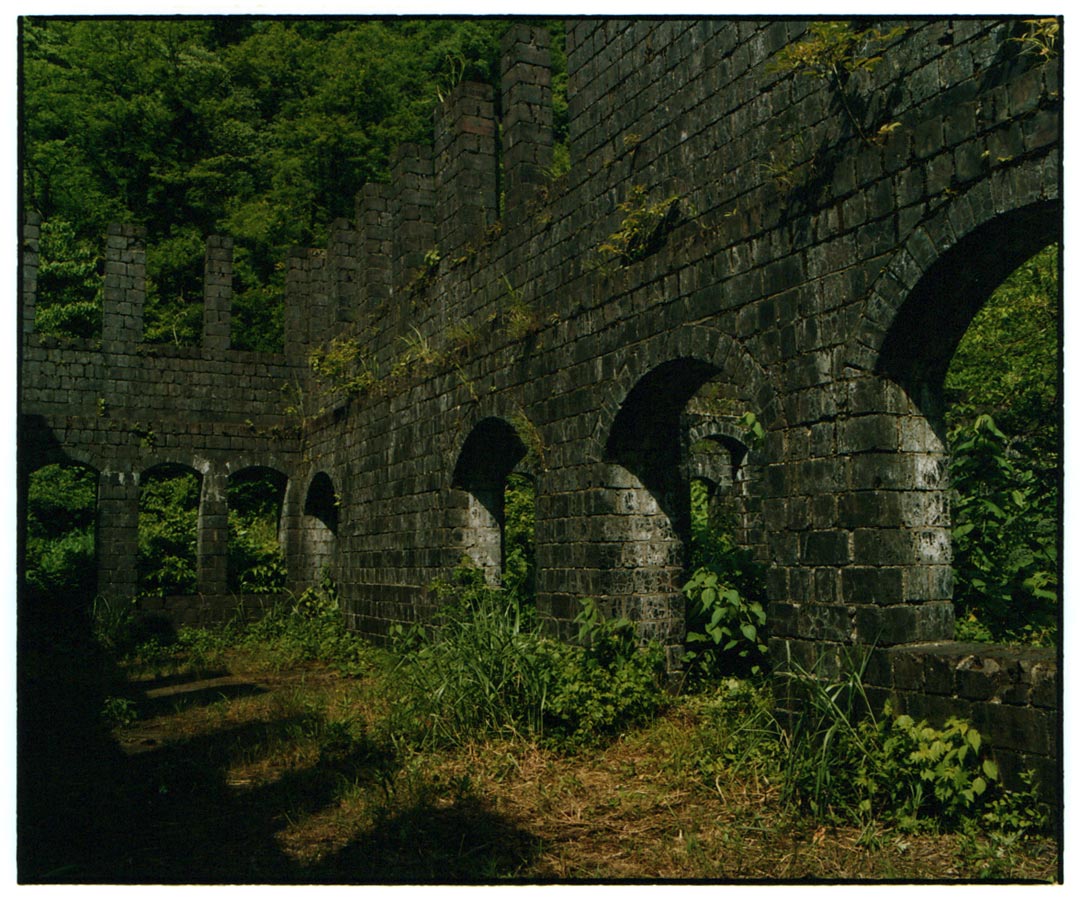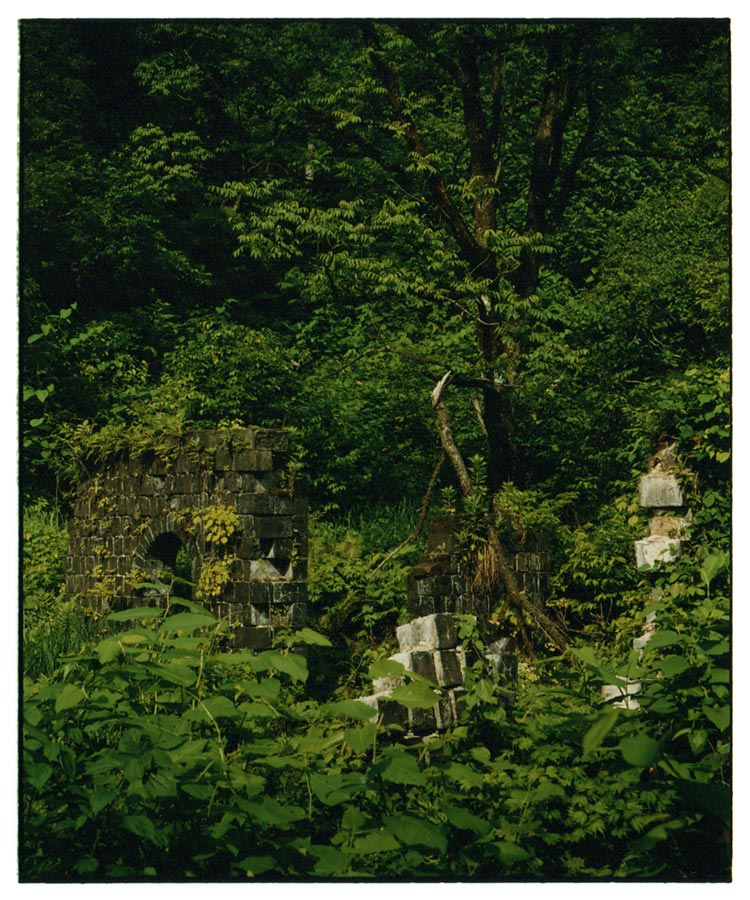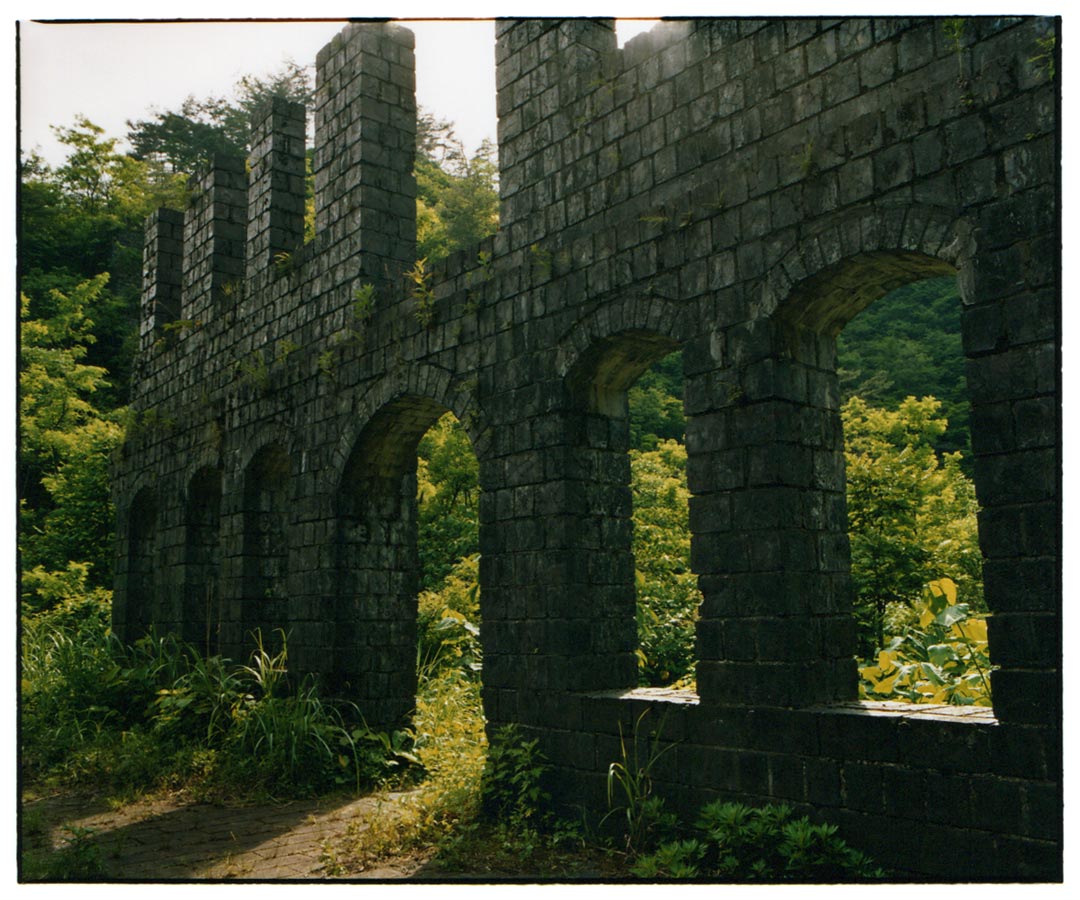持倉鉱山跡
県北東部の山間を流れる五十母川の上流域に位置し、江戸中期から大正期にかけて銅鉱を産出しました。 発見は江戸初期の寛永年間と伝えられ、山腹には江戸中期 享保年間のものとされる旧坑や鉱滓跡が残ります。 明治初期の持倉では、山師 石津石溪のもとで年間 2 t 余りの吹銅が生産され、次いで、1874 年(明治 7 年)に津川の資産家 平田次八郎が借区を受け、4 年にわたって小規模に採掘を行いました。 その後、1904 年(明治 37 年)に新発田の寺田助松が新たに銅鉱床を発見し、2 年後に鉱業権を取得します。 同年に権利は五泉の実業家 小出淳太の手に渡り、持倉は本格的な開発を迎えることとなりました。 坑内から選鉱場にかけて軌道が敷設された他、1908 年(明治 41 年)に旧来の山下吹は廃止され、高炉法を採用した製錬所が新設されるとともに、上流の選鉱場との間には全長 1,818 m の索道が架設されました。 また、通洞坑の開削作業が進められる中、1913 年(大正 2 年)に発電所の完成に伴って削岩機が導入された一方、同年の岩越線(後の磐越西線)五十島駅の開業により、製品の大量輸送が実現します。 その後、1916 年(大正 5 年)に持倉鉱山合資会社(後の小出鉱業)が発足し、翌年に生産量は粗鉱 25,706 t、粗銅 686 t に上り、鉱夫数は 699 名を数えて最盛期を迎えました。 第一次大戦の終結を受けて銅価が下落する中、1919 年(大正 8 年)に経営は三井鉱山に移管されますが、同年の探鉱調査は成果を得られず、操業は翌年に休止されました。 その後、昭和前期と中期の 2 度にわたり、数年に及ぶ探鉱調査が行われますが、有望な発見に至ることなく、持倉はやがて放棄されることとなります。 五十母川の沿岸には、製錬後の鉱滓から造られるカラミ煉瓦を用いた鉱山事務所や製錬所跡が今も残ります。
1920 年閉山
Mochikura Mine
The mine was located in the upper Isomo River basin in the northeastern part of the prefecture and produced copper ore from the 18th to the early 20th century. According to tradition, the discovery was made in the first half of the 17th century, and old workings and slag of the first half of the 18th century remain on the mountainside. In the middle of the 19th century, Sekikei Ishizu, a prospector, produced over two tonnes of crude copper per year. Later, Jihachiro Hirata, a wealthy person from Tsugawa, acquired leasehold rights in 1874 and operated the mine for four years. In 1904, Sukematsu Terada, from Shibata, discovered a copper ore deposit and acquired mining rights two years later. The same year, Junta Koide, a businessman from Gosen, inherited the rights and initiated full-scale development of the mine. While tracks were laid from the adits to the beneficiation workshop, the refining method was shifted from the traditional Japanese Yamashita-buki to the blast furnace process, and a new smelter was built on the bank of the Isomo River in 1908. Additionally, an aerial tramway spanning 1,818 meters connected the smelter to the workshop in the upper reaches of the river. Alongside the construction of Tsudo Adit, rock drills were introduced following the completion of a power plant in 1913. Furthermore, the opening of Igashima Station on the Gan-Etsu Line, later the Ban-Etsu West Line, enabled the mass transportation of products. Koide and others established Mochikura Mine Limited Partnership, later Koide Mining Co., Ltd., in 1916. In the peak year of 1917, the company employed 699 miners and produced 25,706 tonnes of crude ore and 686 tonnes of crude copper. While the market price of copper declined due to the end of the First World War, the management of the mine was transferred to Mitsui Mining Co., Ltd. in 1919. Although the company began mineral exploration in the same year, the operations yielded no results, leading to the suspension of mining operations in the following year. In the middle of the 20th century, mineral exploration resumed twice over several years. However, its efforts ended in failure, resulting in the abandonment of the mine. The remains of the facilities, such as the mining office and the smelter, built of slag brick can still be found near the river today.
closure in 1920
新潟県東蒲原郡阿賀町五十島
銅、亜鉛、金、銀
Igashima, Aga Town, Higashi-Kanbara District, Niigata
copper, zinc, gold, silver
鉱床は本山をはじめ、東華、北星、光盛などの複数の鉱体で構成され、坑口は持倉沢の右岸に連なる急峻な山腹に集中しました。 沢沿いには採鉱事務所や選鉱場の他、鉱夫の寄宿舎が並ぶ飯場が置かれた一方、操業当初の製錬所は 8 km ほど下流の阿賀野川沿岸に設けられ、精鉱は運搬夫の背で運ばれました。 また、一帯は冬季の積雪も多く、1914 年(大正 3 年)に発生した雪崩では飯場が被害を受け、1 棟が倒壊して 40 名が生き埋めとなり、6 名の死者と 12 名の負傷者を出す惨事となります。 鉄道の延伸計画が進む中、五十島駅の開設に向けて請願を重ねた下条村は、鉄道院から設置費用の負担を求められますが、鉱山側が多くの資金を拠出するかたちで開業が実現しました。 これに伴って製品の輸送は舟運から鉄道に変わり、古河合名会社や久原鉱業に向けて粗銅が出荷されました。
The ore deposits comprise several ore bodies, such as Honzan, Toka, Hokusei, and Mitsumori. Most of the mine entrances were located on the steep slopes of the mountains on the right bank of the Mochikura Stream. Meanwhile, mining facilities, including a mining site office, a beneficiation workshop, and bunkhouses, were constructed along the stream bank. At the beginning of operations, the smelter was situated on the bank of the Agano River, and concentrates were transported by carriers on foot over a distance of eight kilometers. The area witnesses heavy snowfall every winter, and an avalanche occurred on the slopes behind the bunkhouses in 1914, causing the collapse of one building, burying 40 people alive, and resulting in six deaths and 12 injuries. While the railway extension plan was in the works, the Railway Bureau demanded that former Gejo Village, which petitioned for Igashima Station, cover the installation costs in exchange for granting its request. Afterwards, the station opened as a result of a large payment made by the mine. Consequently, the mode of product transportation was changed from river to railway, and products were shipped to Furukawa General Partnership and Kuhara Mining Co., Ltd.

